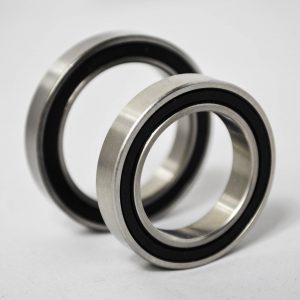Whether an avid cyclist or a casual rider, proper bike storage is essential to ensure your trusty two-wheeler stays in great shape. Following a few simple steps, you can protect your bike from damage, maintain its performance, and prolong its lifespan.
How and where you store your bike is a big part of this, not only during the riding season, but also when it isn’t. Here’s more information:
Choosing the Ideal Storage Location
When storing your bike, finding the right location is crucial. Here are a few factors to consider:
Indoor vs Outdoor. Store your bike indoors to protect it from the elements. Exposure to rain, sun, and extreme temperatures can cause rust, fading of paint, and damage to components.
Temperature and Humidity. Opt for a storage area with stable temperatures and low humidity. Fluctuations in temperature and excessive moisture can lead to corrosion and deterioration of parts.
Space Considerations. Ensure you have enough space to accommodate your bike comfortably. Hanging your bike vertically or using a dedicated bike rack can save valuable floor space.
Preparing Your Bike for Storage
Before you store your bike, it’s essential to thoroughly clean and inspect it. Here’s what you should do:
Clean Your Bike. Remove any dirt, mud, or debris from your bike using a mild detergent and a soft brush. Pay special attention to hard-to-reach areas such as the drivetrain, spokes, and brake calipers.
Lubricate Moving Parts. Apply a thin lubricant layer to the chain, derailleurs, and pivot points. This will help prevent rust and ensure smooth operation when you take your bike out of storage.
Check Tire Pressure. Inflate your tires to the recommended pressure. Properly inflated tires will help maintain their shape and prevent damage while in storage.
Inspect and Adjust. Inspect your bike for wear or damage. Check the brakes, gears, and cables, and make any necessary adjustments or repairs before storing.
Storing Your Bike
Now that your bike is clean and prepared, it’s time to store it safely:
Vertical Storage. If space allows, storing your bike is an excellent option. You can use a wall-mounted rack or a free-standing bike stand. Ensure the bike is stable and securely fastened to prevent it from tipping over.
Horizontal Storage. If vertical storage is not feasible, lay your bike flat on its side. Place a soft cloth or a bike mat underneath to protect the frame and components. Avoid storing your bike with weight on the wheels for extended periods, as it can cause them to warp.
Suspension Considerations. If your bike has a front or rear suspension, consider suspending it from the ceiling using specialized hooks or a pulley system. This will relieve pressure on the suspension components.
Long-Term Storage Tips
If you plan to store your bike for an extended period, follow these additional tips:
Remove the Battery. If you have an electric bike, remove the battery before storage. Store it separately in a cool and dry place, following the manufacturer’s instructions.
Protect from Dust. Use a bike cover or a clean cloth to shield your bike from dust accumulation. This will help prevent debris from settling on the bike’s surfaces and components.
Regular Check-Up. While your bike is in storage, periodically check it for any signs of damage or pests. Inspect the tires for cracks and the frame for rust, and ensure no unwanted visitors like spiders or mice.
Properly storing your bike is crucial for its longevity and performance. By choosing an appropriate storage location, preparing your bike adequately, and implementing the proper storage techniques, you can ensure that your two-wheeler stays in top shape, ready for your next cycling adventure. Remember to perform regular maintenance and check-ups even while your bike is in storage, as prevention is key to avoiding costly repairs and keeping your bike in optimal condition for years.
Share this post:



